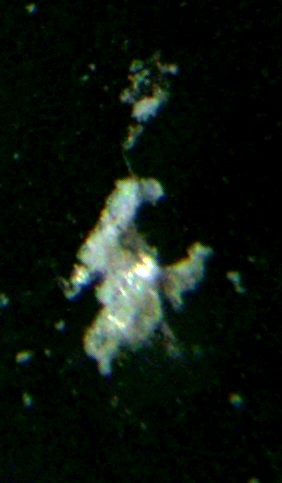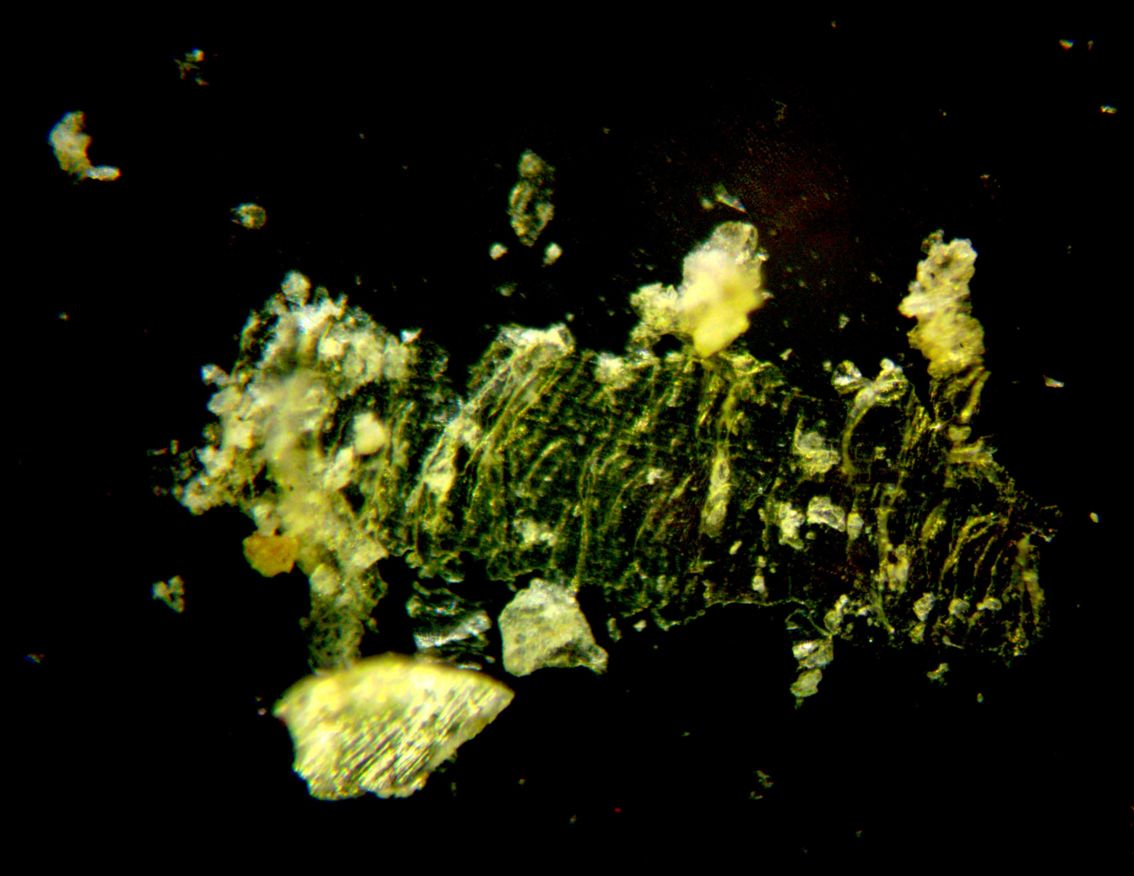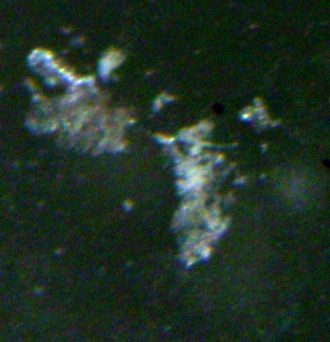

The Chu silk manuscript - continued discussion
John Bjarne Grover
The article continues the discussion from the previous article on the same theme - The chinese Chu silk manuscript.
The question is whether the socalled Chu silk manuscript is at the centre of an international 'intelligence' intrigue against China. For example, it is not impossible that the socalled 'Krarup Nielsen' photos could converge on such a phenomenon. The reason for such an assumption could be found in the page photos, the small detail that the lagoon woman holds in her hand - here annotated:


It could be in the idea of the head of WHO that this (c)HU is interesting. Gro Harlem Brundtland became head of WHO, the world 'doctorate' organization, around the time when my doctorate dissertation was rejected in 1998.
I notice also the name of the chinese president 'Hu Jintao'.
If the Chu silk manuscript be of such importance, it could be a western 'political' interest to get it under control - for getting the oldest chinese cultural artifact under control.
My magic pictures from 2014 can perhaps prove that the Chu document is authentic. What is sensational about my 2014 pictures is that they can be seen to collect empirical evidence from behind the maya curtain. The 'maya' is a concept of classic indian/hindu philosophy, telling that the historic reality is a veil of illusion called 'maya', behind which one can spot a more real world. It would be in accordance with my 'fundamental theorem of linguistics'. In 2014 - at the end of my writing of part 2 ('Unter Gesellschaft') of my german poetry book 'Der Dornenstrauch' - I stood looking down into the bathtub when it seemed that this 'maya curtain' was drawn aside and 4-5 black spots emerged on the white enamel - they had not been visible while the 'maya' was between. It was one of these 'behind maya' spots that I rubbed off and smeared on a microscope glass and photographed under the microscope. That is why these 'magic pictures' could have empirical evidence for the assessment of the authenticity of the Chu document.
I here discuss some further illustrations on the Chu manuscript against some other of my 'magic graphics' - see this file under '6. The graphics'.
The Chu manuscript is said to be from the time of 'Warring States', and a quote from my TEQ book 9 = "...to be an emperor..." (written in 1999) could be interesting - the four lines of TEQ poem 578 (which is #88 out of 116 in book 9):
TEQ #578
Matthew 2:15
ινα
πληρωθη
το
ρηθεν
υπο κυριου δια
του προφητου λεγοντος
...and presses silver curl with everybody
for months on end, and when I finally can screw -
- when she was carried out the stage Arena..
Wilfoen Progman
It seems that the four archetypes (the three first archetypes are described here and the fourth is here) are evenly distributed on the Chu silk 'shirt': The piano girl with the 'screw' in the back of the piano (lions - the dogs paradox) is in the lower left shirttail, the screw and the screw annotated, while on the collar up left there is a 'silver curl' that looks very similar to the female polar bear archetype of my magic graphics:


There exists a sign ZHUANG (meaning form, appearance, shape) that resembles that mid upper sign (eye with eyelashes, so to speak) of the corresponding 'sunglasses'. This white 'S' is clearly the 'silver curl' of my poem.
The fourth archetype - with the man with the zigzag legs - is probably in the shirttail down right, the intertwined 'horns' of 'stage Arena', while 'Wilfoen Progman' will be the male archetype (man-on-wagon) with visual ('cognitive') glasses on top and shady beard or whiskers at the collar up right (turned around):


The 'man-on-wagon' carries an apparent goat-head in his one hand - is it the boy in front? - and what could be a 'Christ' or 'crucifix' in his other hand, here annotated.
What is the reason for these correlations with my poetry and graphics? The four black spots on the white enamal bathtub bottom emerged after what was felt like an splitting apart of the MAYA illusions of historic reality - and one could say that these archetypes are the same as the limitations of the human visual faculty: If we see something, then we necessarily see it in the form of these 'transcendent' things.
Next there is - a little up of the dog's paradox with the 'lions' in the air - what could resemble my own 'indian' or 'Finnegan's Wake:


Some fanatics could perhaps see this as the same character as the 'crucified' in the hand of 'man-on-wagon' - here he apparently steps out from 'a deep ratch' in the surface - like a 'caesarean section'. Unhealty and 'secret' angst-philosophy - it could be about a 'very dangerous sect' - could perhaps have imposed this dependency onto the contents of the hand of the man-on-wagon.
I associated this outstepper with poem 18 in chapter 4 of 'SNEEFT COEIL' - that is 50/142 through the book, which multiplied with the 1719 of TEQ given poem 606 = 'A deep ratch', which says that we can pull names/trains from the lexicon hat, doorsteps for the Achaian worm. Hence there could be a 'lexicon hat' on top of the head of the out-climber and a 'doorstep' in the window frame behind him. What is that 'hat' - a la the 'strad' on top of the head of the indian?
'A deep ratch' is book 10, the first after book 9 of the 'Warring States'. I wrote the first word of book 10 in the morning 1 jan 2000 - the first word written in the new millenium. 'A deep ratch' is, though, not associated with the apparent slit in the surface through which the character is stepping - but rather with the cogwheel indentations in the 'zifferblatt' of the hypothesized human language faculty. The theory is (by my fundamental theorem) that the language faculty has its form from the redundancies arising from the recognition of samenesses across different realities. Hopefully sumerian cuneiform can be verified by way of this 'zifferblatt' and that could also shed more light on what the 'deep ratch' is about.
It is the wolf-dog of my magic pictures which is closest to the man in the moon on the Chu manuscript - and that makes sense. One notices the similar wrenches:


In my description of 'dogs paradox', which is my own observation, there is a fence and a tree and a rope going from the tree under the fence - here seen in the Chu silk manuscript as a line between the tree and the 'dogs':

(I noticed also when I observed the dogs digging that there was an ad nearby with a photo of a man with a very sharp look in his eyes - I think it was for a magician who were to give a performance).
In the Chu manuscript it seems that this character at the end of the line is associated with the 'man-in-the-moon', according to classic chinese mythology. For once, the two signs just above and to the left of the head of this character seem to be the signs for this god:


Mathews refers to the theory of the man-in-the-moon who with an invisible thread unites people for marriage:

This clearly makes sense for the buried (invisible) rope that the two dogs found when they dug by the fence - it seemed that the rope went under the earth to the tree on the other side of the fence. They were very enthusiastic about it. In the Chu manuscript, the rope goes from the man along the tree - the rope dividing the pianogirl lovers from the tree. Just above and to the left of the head of the man-in-the-moon there are the two signs which seem to mean 'man-in-the-moon':

It is the high precision in this which makes it reasonable to conclude that it really is the man-in-the-moon who is intended - and then the two chinese signs in question are likely to be what is written on the manuscript.
Finally, the four-headed illustration on the Chu silk manuscript resembles my 'Restaurant Ganesh':

The picture is so called because of the 'table' which resembles an elephant lying on its side, being enjoyed with pleasing the human guests. There seems to be a Casanova, of earnest and sincere intentions (is it a glory circle over his head?), who hopes for the lady's consent - the soprano or actress seems to agree by letting it flow from her hands while looking shyly aside. The moon has the same sort of lower jaw as the Casanova. An Oberkellner with epaulettes is approaching. The chinese sign for 'elephant' is the following, aligned with the relevant 'four-headed' phenomenon on the Chu manuscript:


There are three chinese script signs to the left of the heads - the first one seems possibly to be the sign 'TUI' which exists in two variants, here defined by Mathews sign 6562:

Clearly it seems to mean what is going on at the restaurant table, in particular when considered in the extended form

The interesting comparison is now this series of signs with the three signs to the left of the four square heads - plus the two first of the four heads. The two last heads would be Casanova and the actress.


where one can replace the first chinese sign with the alternative version for seeing it clearly.
Finally there is (in addition to the 'scene in the park') only one major element left of the 'magic graphics' and that is the 'ablysses' Joyce picture - with what looks like Eisbeins on rollerskates. There is only one major illustration left on the Chu silk manuscript - that is the 'triplehead'. Are these 'the same'? Maybe the 'Joyce' must be turned some degrees around in the sofa for making it similar - stretching the legs out or not - see the figure under the 'GIB' lettering:


The character with the three heads (and the third is the head of who?) could be a sort of 'necro' symbolism - isnt there a 'parabola antenna' or something like that around his waist? (See also the 'three pellets' and the 'curve' which occurred as objects at some other time). To the left of the three heads there are three signs which look a little like GIB. Searching for relevant chinese signs I find the following of some interest, although I suppose it is possible to find better examples:


Are there any reflexes of the 'scene in the park'? I try the following procedure: On the straight line between the 'necro triplehead' (the Eisbein Joyce in the sofa) and the shadow stepping out of a slit (the 'indian') I raise a perpendicular line mid way and lead it up to the end of the 'shirt' - at its shoulder next to the man-on-wagon upside down. There are in fact some 'structures' there which could resemble the forms in the parkscene:



What had happened? It seems to be a cardinal and a prophet friend of his (peeping over his shoulder) who looks at the young woman in her long dress fleeing from what they had seen in the darkness of the park (what had they seen? had they seen the main archetypes or something like that?), under the tall dark trees in the autumn park - her boyfriend is coming behind her and is just climbing over a fence of horizontal planks which is a little too tall - he seems to have an electric torch in his hand.
Could be the theme of this park scene is of the kind which people do better without - and therefore a part of the quality of the Chu silk manuscript is that this scene is omitted or only vaguely sketched in the margins. Then it goes forwards and not backwards.
Conclusion
It is the independent nature of my 'magic graphics' from 2014 and its high relevance for the illustrations and script signs of the Chu silk manuscript which allows for the assumption on the latter that it probably be authentic and is not the creation of more recent 'political' or 'sectarian' intrigue. It also suggests that this intrigue be not in 'semiotic control' with the 'magic' of the document. In addition, ideas that my own poetry and its relevance for the Chu manuscript should be under such 'intrigue control' lose their force by the same logic. A guess on what the purpose with the Chu silk manuscript could have been - if it were deposited in a grave along with a deceased - is that it could have constituted a recommendation letter in archetypal form for helping the voyager find an optimal reception in the new reality behind the 'maya' of the illusory historic reality. If one assumes a less 'cultic' background, one could think of the document as an exploration of the archetypal-semiotic relation between form and meaning in the early chinese script - such as the 'Restaurant Ganesh' image could be telling of. Could be, with a little training, the document even would whisper the sound associated with the form-meaning relation in the inner ear of the reader. If so, the magic document could be a practical dictionary telling the sound, the graphic form and the meaning of the chinese script signs.
PS When I went to my first year in school, in 1964-65, I passed on the way every morning a small grocery shop called 'Jarle' or 'Jarle's'. I have fancied that I one morning met Nelly Sachs waiting for me there outside the shop, before it was opened. But I dont know if this is more than a fantasy. Notice also the form above the head of the 'Finnegan'.
Sources
Mathews: Chinese-english dictionary. Harvard 1931/1943.
Source for the picture of the Chu silk manuscript is from the internet - I found it on this location.
© John Bjarne Grover
On the web 20 october 2019